 Well, after reading Wizard by Ozzie Smith, of course I immediately picked up Wizard by John Varley. As it happened, they were close together, relatively, on the to-read shelves in the hallway which we just turned over as we painted the hall.
Well, after reading Wizard by Ozzie Smith, of course I immediately picked up Wizard by John Varley. As it happened, they were close together, relatively, on the to-read shelves in the hallway which we just turned over as we painted the hall.
It turns out that this book is the middle book in a trilogy–I did not know that when I started it, as it does not seem to pick up en media res but instead introduces us to a couple of characters who will factor into the story and establish some world building. It starts with Chris, a schizophrenic in California who goes into the embassy of Gaea and meets some Gaeans–well, Titanides, who are centaur-like except that they have both sets of genitalia on the horse-part at the back but a single set of human genitalia on the front–heaven help us, this will be explored later. Chris seeks to visit Gaea, the god-like computer running a small Ringworld-lite space station in the outer part of the solar system as Gaea can cure his condition. Meanwhile, a woman raised in a woman-only society on a space station at a LaGrange point seeks a similar audience with the computer to heal her epilepsy.
They both make their way to Titan, the space station, and climb the kilometers-long cable to the hub where Gaea, represented by an old woman avatar, resides. She’s grown bored, having created and destroyed civilizations and races on her habitat over the millions of years, and she in recent millenia has started to have to deal with insubordinate local computer systems which run different regions of the planets. So Gaea encourages “pilgrims” to come try to visit her, and they can choose to live in her hub without their diseases or they can go out and do something “heroic” to earn a permanent cure. Both pilgrims decide to try something heroic, and they link up with Rocky, the titular Wizard, and her associate Gaby who is an engineer doing contract work for Gaea.
Turns out that Rocky and Gaby were the stars of Titan, the first book in the series, but they’re kind of introduced as individual characters, so early on it does not require a lot of knowledge of that book to get into this book.
So the party sets off, nominally to do something heroic, but easy heroic quests have already been done. Few dragons remain; the idols have lost their jeweled eyes; and so on. But Gaby and Rocky use the journey, nominally a survey of the regions and interviews with the sometimes rebelious, sometimes obsequious, regional computers, to determine what allies they might have in an attempt to overthrow Gaea.
So it’s kind of like Ringworld with some fantasy elements to it. In addition to the centaur-like creatures, the book features “angels” who have wings and a variety of other beasts, all created by Gaea for amusement or to set the stage for later heroics. As the party goes along and encounters difficulties, members die, so one does not know who might make it through the journey–and the actual point of the journey, from Gaby and Rocky’s intent, only becomes clear later as one lies dying and explains why the odds were so stacked against them.
And although the book starts off as though it were not part of a trilogy–with a good intro to the world (well, space station) and characters new and old, the ending makes clear that the story is To Be Continued. Although some survive and find resolution (abruptly), it ends with a vow of vengeance.
So it was an okay read; a bit disappointing in that it leads into the next book, Demon (and when I checked out the science fiction shelves at ABC Books last weekend, they only had a copy of Wizard–no first or third book available).
I did mention that the Titanides have both male and female horse genitalia in the rear and one set of human genitalia up front. The book goes into detail about how Titanides procreate, and it’s complicated, starting with the fact that the Wizard has to put the unfertilized egg in her mouth to activate it, and then it has to be fertilized both in the back and in the front and…. Well, okay, it’s weird. But a helpful appendix shows you the many ways it can occur between female and male Titanides. Also, Titanides and humans, as it turns out.
Also, I flagged a couple things in this book on a common theme. When we did our recent trivia night, one of the categories was words without the vowels. One of the questions was MSM, and my beautiful wife and I had the same answer: miasma. Cooler heads amongst our team realized that this word was more likely museum. But right after that, I found the word miasma in the book. Then, one night at dinner, I asked my boys if they knew what portage meant. They did not, so I explained it. And then I found the word in the book. On a later evening, my wife said the word offal, which would fit right into the book and…. Well, that word was not in it. But talking about two words that showed up in this book shortly thereafter probably speaks to the belief that the AI and algorithms are listening to us because we spot patterns about what we talk about and what ads we see on the Internet. And that lesson is: The AI in this forty-year-old Book Club Edition is smart enough to not also display offal to establish the pattern and make me suspicious. Truly, truly, I say to you, the world is magic and duplicitous. Which might also be the lesson of this trilogy.
So in looking back at the two other books of Varley’s that I’ve read–Millennium and The Ophiuchi Hotline, I’ve found them kind of meh, but I remember them fondly. If I had found one or the other of the books in this series this weekend, I would have bought it. And I have one or more books by John Varley on my bookshelves, and I’m not likely to recoil from them when I come across them in the future. Perhaps the next time I paint. In 2035 or so.
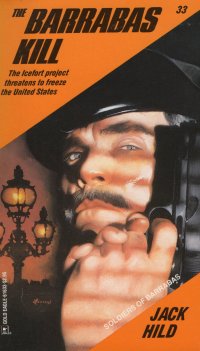 Not long after I read The Barrabas Fire, I picked this up, the last volume in the series. I mean, I have only read a handful of them and have not seen them in the wild recently–not that I’ve been looking–so it’s not as satisfying as reading the last of The Executioner novels on my shelves. But it’s a little sad to reach the end, although I have plenty of books in the gaps in my collection if I am so inclined.
Not long after I read The Barrabas Fire, I picked this up, the last volume in the series. I mean, I have only read a handful of them and have not seen them in the wild recently–not that I’ve been looking–so it’s not as satisfying as reading the last of The Executioner novels on my shelves. But it’s a little sad to reach the end, although I have plenty of books in the gaps in my collection if I am so inclined.


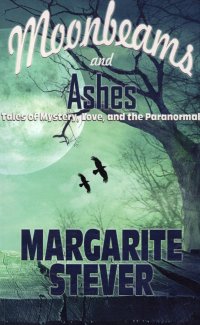 Oh, gentle reader. I confused this author with V.J. Schultz, whose book
Oh, gentle reader. I confused this author with V.J. Schultz, whose book 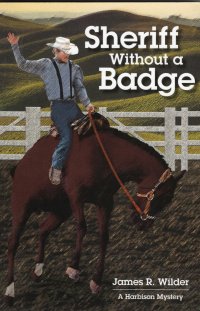 I got this book at ABC Books in
I got this book at ABC Books in 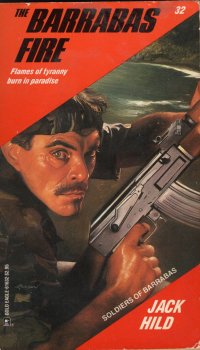 Sweet Christmas, gentle reader, but sometimes these book reports, or at least the “research” in them, makes me feel old. In this case, I have discovered that the last time that I read a book in this series was in 2014 (
Sweet Christmas, gentle reader, but sometimes these book reports, or at least the “research” in them, makes me feel old. In this case, I have discovered that the last time that I read a book in this series was in 2014 ( Well, after reading
Well, after reading  I read Bob Gibson’s
I read Bob Gibson’s  I picked this book up off of the free book cart at church. Although I check the cart every week, or at least when my beautiful wife needs to be at church early because she’s singing, playing trumpet, or ringing bells (which might only be five out of every six weeks), I do generally wait a week or two before grabbing a free book because I do have other things to read here.
I picked this book up off of the free book cart at church. Although I check the cart every week, or at least when my beautiful wife needs to be at church early because she’s singing, playing trumpet, or ringing bells (which might only be five out of every six weeks), I do generally wait a week or two before grabbing a free book because I do have other things to read here.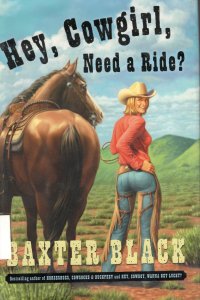 This book is a sequel to Hey, Cowboy, Want To Get Lucky?, and the joke’s on me. When I bought this book
This book is a sequel to Hey, Cowboy, Want To Get Lucky?, and the joke’s on me. When I bought this book  As I read the first in this series,
As I read the first in this series, 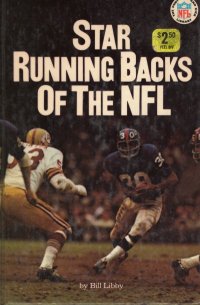 Gentle reader, you might know I am a sucker for children’s books on celebrities or sports figures. For example:
Gentle reader, you might know I am a sucker for children’s books on celebrities or sports figures. For example:
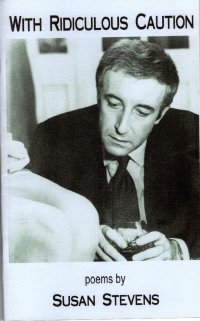 I just picked this chapbook up
I just picked this chapbook up 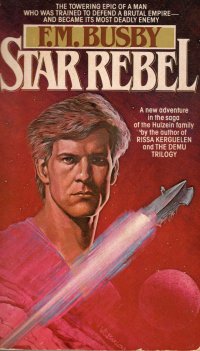 A book review of F.M. Busby’s Cage A Man, the first part of the Demu Trilogy, prompted me to pick up this book (as
A book review of F.M. Busby’s Cage A Man, the first part of the Demu Trilogy, prompted me to pick up this book (as 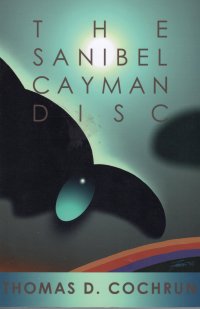 I must confess to you, gentle reader, that it took me three tries to make it through this book. The first, no doubt, was during or not long after our vacation to Florida which included a stop on Sanibel Island
I must confess to you, gentle reader, that it took me three tries to make it through this book. The first, no doubt, was during or not long after our vacation to Florida which included a stop on Sanibel Island  I thought I might have just picked this up at the Friends of the Springfield-Greene County Library Book Sale
I thought I might have just picked this up at the Friends of the Springfield-Greene County Library Book Sale 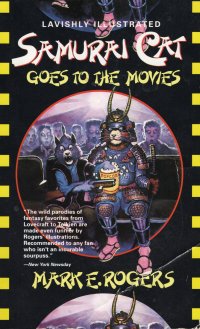 I bought this book
I bought this book  I got this book the last time Sleuth Ink came to ABC Books for a signing
I got this book the last time Sleuth Ink came to ABC Books for a signing  I forgot to include Fraktur in my list of
I forgot to include Fraktur in my list of  Well, gentle reader, when I reported on
Well, gentle reader, when I reported on  I saw this book mentioned on a blog, and I cannot remember which one. It almost makes me want to create a blog or browser plugin called “Where’d I read that?” which searches the sites on your blog roll and in your browser history to find out where I should attribute credit. Or I could just guess Bayou Renaissance Man, conduct a quick site search over there, and discover
I saw this book mentioned on a blog, and I cannot remember which one. It almost makes me want to create a blog or browser plugin called “Where’d I read that?” which searches the sites on your blog roll and in your browser history to find out where I should attribute credit. Or I could just guess Bayou Renaissance Man, conduct a quick site search over there, and discover 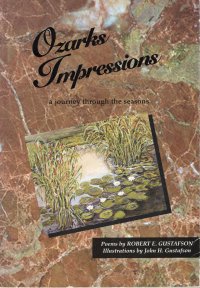 I am not sure when I got this book. It has a Redeemed Books sticker on the back that seems to indicate it was added to their inventory in 2010. So somewhere between then and now. It is a collection of poetry written by a retired economist from a consultancy or think tank and it’s illustrated by his brother, a retired artist. The volume I have is numbered 386 of 1500 and is inscribed to Linda. I found myself musing as much on the history of this book and the men who produced it as the actual contents.
I am not sure when I got this book. It has a Redeemed Books sticker on the back that seems to indicate it was added to their inventory in 2010. So somewhere between then and now. It is a collection of poetry written by a retired economist from a consultancy or think tank and it’s illustrated by his brother, a retired artist. The volume I have is numbered 386 of 1500 and is inscribed to Linda. I found myself musing as much on the history of this book and the men who produced it as the actual contents.